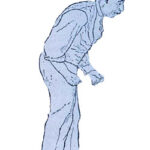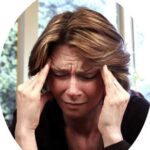 Drs. Andrew Mendelsohn and James Larrick at the Panorama Research Institute and Regenerative Sciences Institute, in Sunnyvale, California, have complied an impressive list of reviews on the effects of exercise. Here’s the first in a series of summaries of their recent publications.
Drs. Andrew Mendelsohn and James Larrick at the Panorama Research Institute and Regenerative Sciences Institute, in Sunnyvale, California, have complied an impressive list of reviews on the effects of exercise. Here’s the first in a series of summaries of their recent publications.
Continue reading Trade-offs: Comparing supplements vs. exercise →
 People with “tennis elbow” (lateral epicondylitis) experience pain over the outer side of the elbow, which may extend down the forearm.
People with “tennis elbow” (lateral epicondylitis) experience pain over the outer side of the elbow, which may extend down the forearm.
Researchers at Keele University, in Staffordshire, UK, studied the response to TENS (transcutaneous electrical nerve stimulation) added to typical treatment. Continue reading TENS to reduce pain intensity in patients with tennis elbow →
 The American Heart Association has summarized the blood pressure-lowering effects of several alternative approaches and provided recommendations for their use.
The American Heart Association has summarized the blood pressure-lowering effects of several alternative approaches and provided recommendations for their use.
Here’s what we know in people with blood pressure (BP) levels higher than 120/80 mmHg. Continue reading Review: Benefits of CAM to help treat hypertension →
 Vitamin C (ascorbic acid) for preventing and treating the common cold has been a subject of controversy for 70 years.
Vitamin C (ascorbic acid) for preventing and treating the common cold has been a subject of controversy for 70 years.
Now, The Cochrane Library has reviewed the data. Continue reading Here’s what we know about vitamin C and the common cold →
 Statins are prescribed to treat high cholesterol and cardiovascular disease. Increased fitness is recommended as an essential part of promoting health.
Statins are prescribed to treat high cholesterol and cardiovascular disease. Increased fitness is recommended as an essential part of promoting health.
Now, researchers at Georgetown University School of Medicine, in Washington DC, report the combined effects of fitness and statin treatment on mortality. Continue reading Advantages of adding exercise to statin treatment →
Continue reading Advantages of adding exercise to statin treatment →
 Trampoline jumping is a beneficial and constructive physical exercise for children, but it has a significant risk for injuries.
Trampoline jumping is a beneficial and constructive physical exercise for children, but it has a significant risk for injuries.
Now, after reviewing the evidence, the American Academy of Pediatrics is discouraging recreational use of trampolines in the home. Continue reading Risk of injury to children who use trampolines →
 Approximately 30% of people over 65 years of age living in the community fall each year.
Approximately 30% of people over 65 years of age living in the community fall each year.
This Cochrane review updates what we know. Continue reading Reducing the rate and risk of falling →
 Researchers in the Netherlands have reported their findings in the Active Prevention in High-Risk Individuals of Diabetes Type 2 in and Around Eindhoven (APHRODITE) study. Continue reading Contributions of the counselor in diabetes lifestyle education →
Researchers in the Netherlands have reported their findings in the Active Prevention in High-Risk Individuals of Diabetes Type 2 in and Around Eindhoven (APHRODITE) study. Continue reading Contributions of the counselor in diabetes lifestyle education →
 Dr. Claude Bouchard and colleagues from around the US and Finland tell us that people differ in their response to regular exercise.
Dr. Claude Bouchard and colleagues from around the US and Finland tell us that people differ in their response to regular exercise.
Sometimes these differences contribute to adverse changes in cardiovascular and diabetes risk factors, according to this study. Continue reading Adverse response to exercise →
 Researchers at the Foundation of Public Health, Mutuelle Generale de l’Education Nationale, in Paris, reanalyzed data from the Women’s Antioxidant Cardiovascular Study (WACS), a cohort of women with prevalent vascular disease or 3 cardiovascular risk factors. Continue reading Support for exercise to preserve cognitive function →
Researchers at the Foundation of Public Health, Mutuelle Generale de l’Education Nationale, in Paris, reanalyzed data from the Women’s Antioxidant Cardiovascular Study (WACS), a cohort of women with prevalent vascular disease or 3 cardiovascular risk factors. Continue reading Support for exercise to preserve cognitive function →
 Patients with Parkinson’s disease have impaired balance, which affects function and increases the risk of falling. Exercise is routinely encouraged by healthcare providers, but few programs have been proven effective.
Patients with Parkinson’s disease have impaired balance, which affects function and increases the risk of falling. Exercise is routinely encouraged by healthcare providers, but few programs have been proven effective.
Researchers at the Oregon Research Institute, in Eugene, studied whether a tailored tai chi program could improve postural control in patients with Parkinson’s disease. Continue reading Tai chi benefits in Parkinson’s disease →
 Researchers at Norwegian University of Science and Technology, in Trondheim, assessed whether exercise during pregnancy might prevent gestational diabetes and improves insulin resistance. Continue reading Exercise during pregnancy →
Researchers at Norwegian University of Science and Technology, in Trondheim, assessed whether exercise during pregnancy might prevent gestational diabetes and improves insulin resistance. Continue reading Exercise during pregnancy →
 Researchers at the University of Exeter, in the UK, evaluated the effectiveness of an exercise program in people with Parkinson’s disease who have a history of falls. Continue reading Testing exercise to prevent falls in Parkinson’s disease →
Researchers at the University of Exeter, in the UK, evaluated the effectiveness of an exercise program in people with Parkinson’s disease who have a history of falls. Continue reading Testing exercise to prevent falls in Parkinson’s disease →
 Researchers at Texas Chiropractic College, in Pasadena, studied children in the National Health Interview Survey (NHIS) in order to estimate their use of supplements. Continue reading Use of dietary supplements to enhance sports performance →
Researchers at Texas Chiropractic College, in Pasadena, studied children in the National Health Interview Survey (NHIS) in order to estimate their use of supplements. Continue reading Use of dietary supplements to enhance sports performance →
 Researchers at the Centers for Disease Control and Prevention examined the relationship between 4 low-risk behaviors and mortality among a group of people in the United States. Continue reading Effect of low-risk lifestyle behaviors on the risk of dying →
Researchers at the Centers for Disease Control and Prevention examined the relationship between 4 low-risk behaviors and mortality among a group of people in the United States. Continue reading Effect of low-risk lifestyle behaviors on the risk of dying →
 Researchers at Northwestern University Feinberg School of Medicine, in Chicago Illinois, studied the impact of this modifiable risk factor. Continue reading Problem of physical inactivity in adults with rheumatoid arthritis →
Researchers at Northwestern University Feinberg School of Medicine, in Chicago Illinois, studied the impact of this modifiable risk factor. Continue reading Problem of physical inactivity in adults with rheumatoid arthritis →
 At first, I was skeptical, but research suggests there are benefits.
At first, I was skeptical, but research suggests there are benefits.
Researchers at Skidmore College, at Saratoga Springs, New York, studied the effects of stationary cycling virtual reality tours (“cybercycle”) on executive function and clinical status. Continue reading Exergaming for older adults →
 Researchers at Beth Israel Deaconess Medical Center, in Boston, Massachusetts, report patterns and reasons for its use.
Researchers at Beth Israel Deaconess Medical Center, in Boston, Massachusetts, report patterns and reasons for its use.
It’s not what you think. Continue reading CAM use among people with migraine →
 Researchers at the University of California, in Berkeley, studied girls, 9 to 20 years old. Continue reading Effect of eating frequency on adiposity →
Researchers at the University of California, in Berkeley, studied girls, 9 to 20 years old. Continue reading Effect of eating frequency on adiposity →
 Researchers at the Universite de Montreal, in Quebec, explored the effects of physical activity programs on fitness, cognitive function, and attention deficit hyperactivity disorder (ADHD)-related behavior in children with ADHD. Continue reading Contributions of physical activity to ADHD care →
Researchers at the Universite de Montreal, in Quebec, explored the effects of physical activity programs on fitness, cognitive function, and attention deficit hyperactivity disorder (ADHD)-related behavior in children with ADHD. Continue reading Contributions of physical activity to ADHD care →
Complementary and Alternative Medicine: Fair, Balanced, and to the Point
 Drs. Andrew Mendelsohn and James Larrick at the Panorama Research Institute and Regenerative Sciences Institute, in Sunnyvale, California, have complied an impressive list of reviews on the effects of exercise. Here’s the first in a series of summaries of their recent publications.
Drs. Andrew Mendelsohn and James Larrick at the Panorama Research Institute and Regenerative Sciences Institute, in Sunnyvale, California, have complied an impressive list of reviews on the effects of exercise. Here’s the first in a series of summaries of their recent publications.















